Author note in 2024: This post is currently being revised based on new information in this ever evolving field of science and discovery: Please note that the information above the “Superhero Brain” image is no longer considered to be an accurate understanding of how the brain works. Check back soon for updates.
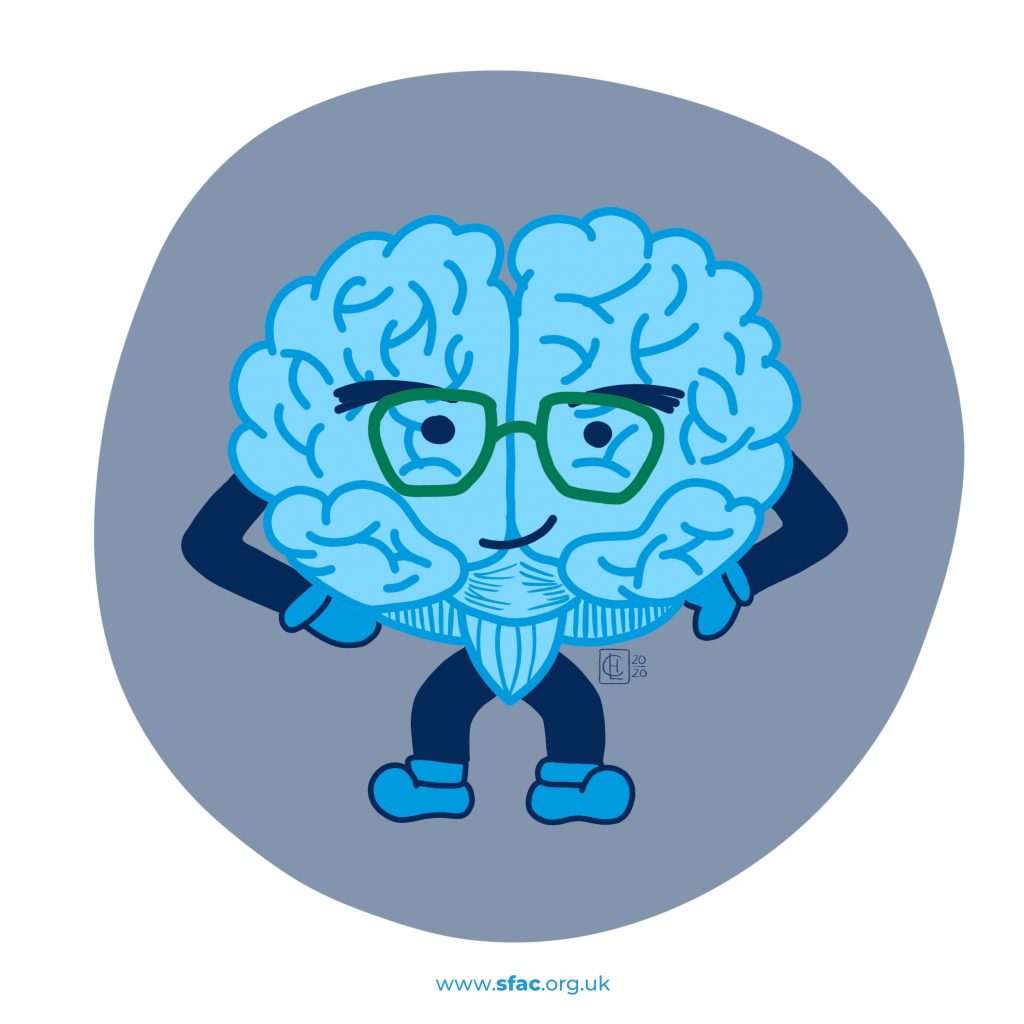
Why is safety so important?
I’m going to leap straight in today and introduce you to a favourite friend of mine. Not your usual friend. An organ friend… You didn’t see that one coming did you?! Well, possibly the picture gave it away… Meet Brain.
This should probably come with a warning – the brain is one of my favourite topics and once you get me started it’s hard to stop! I’ll do my best to keep this brief.
Our brains have one job. Just one. To keep us alive. Keeping us alive is an incredibly complex job so our clever brains do everything they can to streamline and simplify. This means they’re constantly scanning our environments for threats (notice how you automatically pay more attention to negative things than positive ones? This is why.).
When a threat is identified an alarm is triggered (in a little place in the middle of our brains called the amygdala for the nerds like me who like names and extra info. It happens to be almond shaped so for English speakers all those As make it easier to remember – Amygdala acts like an Alarm, shaped like an Almond!).
It’s time for our brains to leap into life saving superhero mode.
In superhero mode Brain shuts down anything not immediately necessary for keeping us alive in that moment. Including the thinking and planning part of our brain – the Prefontal Cortex. Why does it do this? Because if you’re about to step out into the path of an oncoming vehicle nobody wants a detailed, carefully thought out five step action plan. You just want action! So Brain sends the thinking parts off line and kicks the instinct parts into action. Suddenly, before we even really know what’s happened, we’ve jumped back out of the way of the car.
This instinct part of our brain is incredibly clever and, in a split second, will decide what the best action is to ensure our survival. This could be anything from running away as fast as your legs will carry you (flight), getting mad and tackling the danger head on (fight), becoming totally still to avoid detection (freeze) or playing dead (faint). There are other options too, but I’ll save them for another day (If you can’t wait, the book, Narrative Exposure Therapy by Maggie Schauer, Frank Neuer & Thomas Elbert explains it well)
Here’s where things can go a bit wrong. Brain isn’t great at distinguishing between life threatening situations and stressful or difficult situations. So the alarm response and instinct based behaviours are just as likely to be triggered before giving an important speech as they are when you realise you’re about to step on a poisonous snake.
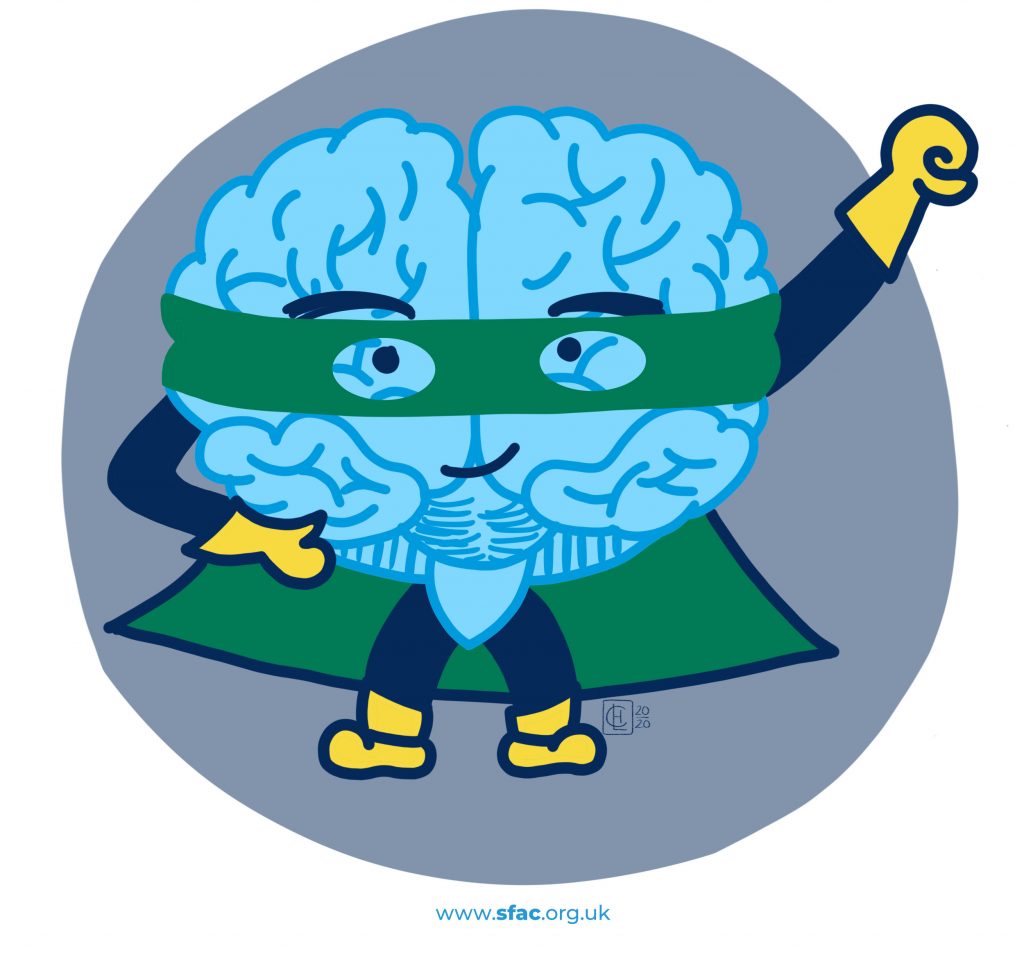
In Protective Behaviours work there is a core underlying theme: “We all have the right to feel safe all the time”. Anything about that sentence intrigue you? There’s a really important word in there and it’s there for a reason. Notice that it says “feel” safe. Not “be” safe.
It turns out that just because we are safe physically doesn’t mean we feel safe. And if the brain doesn’t distinguish between the two then our body is going to react the same way in both situations.
Here’s a couple of examples to explain what I mean.
A child who has just been removed from an abusive family situation and placed in temporary accommodation might now physically be safe but they probably don’t feel safe in such an unfamiliar environment. This child might not act in particularly logical, thoughtful ways. Instinctual behaviours are likely. Think reluctance to engage and withdrawal (flight); acting out, yelling or destroying property (fight); or zoned out and hard to reach (freeze). If professionals and carers working with the child don’t understand how the brain works when we feel unsafe, these behaviours can be misinterpreted and lead to frustration, poor decision making and the breakdown of the child’s care.
One of the hardest things to understand is that being safe doesn’t necessarily mean you feel safe. And, if you don’t feel safe your behaviours and emotions will move towards an instinctive need to survive.
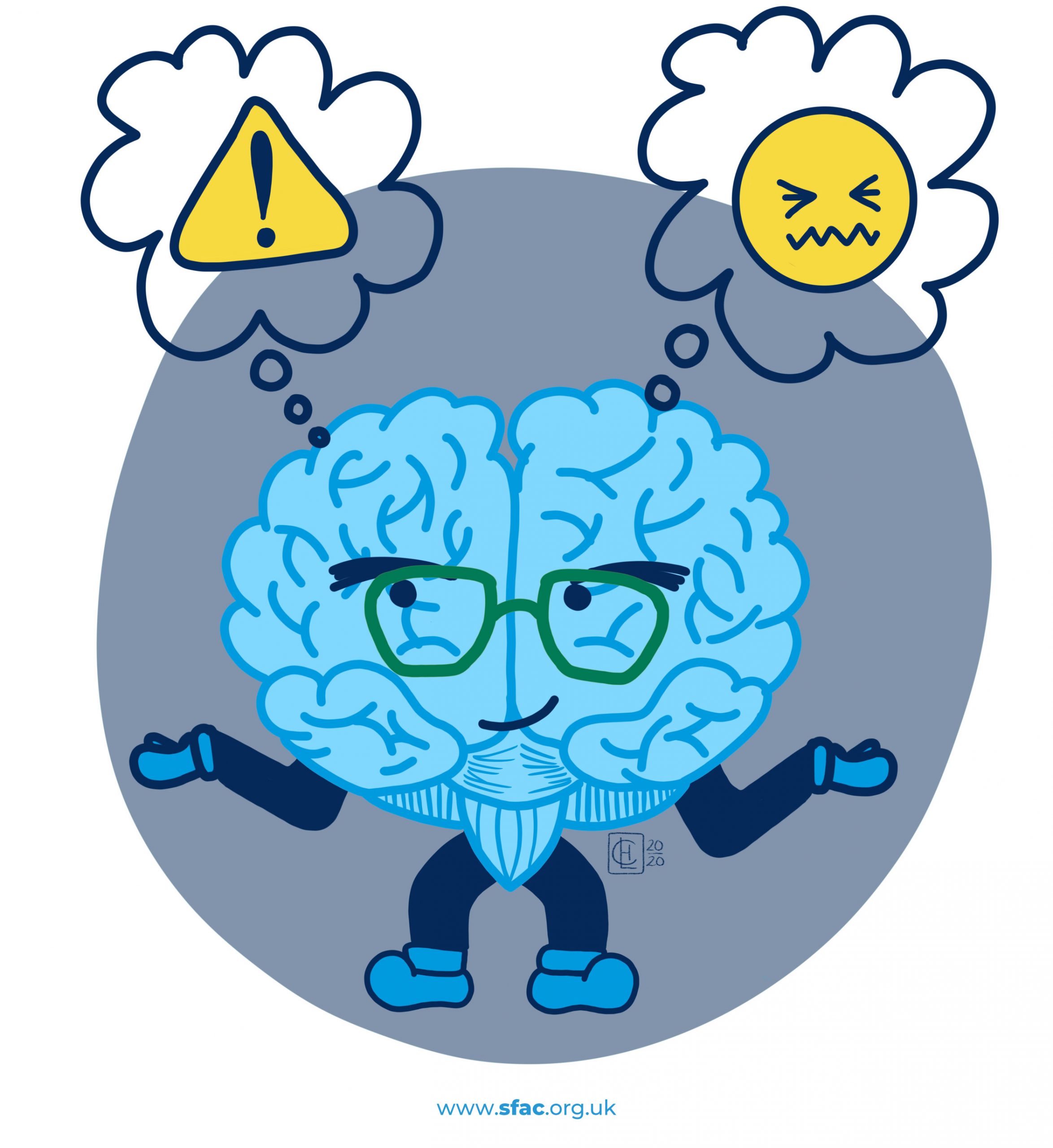
Another situation where this distinction between feeling safe and being safe is important is in understanding why people who’ve been in abusive or chaotic environments often seek out similar environments even after they’ve been removed.
Familiarity is an important part of feeling safe. When we know how things go, there is a level of predictability there that helps us to cope, even when what’s coming isn’t great. You feel safer with familiarity than the scary unknown, even when you know it’s not safe! It’s a horrible environment of anxiety, fear, and survival.
Remember that Brain likes to simplify its complex job of keeping us alive as much as possible. One aspect of this is Brain is not a big fan of unfamiliar situations… There’s too much unknown, too many potential threats. Unfamiliar situations require Brain to do a lot of work to learn the new environment. It prefers you to be in familiar situations and routines.
For a woman who has left, or is considering leaving, an abusive relationship, the alternative might feel destabilising and disorienting – feelings which generally align with feeling threatened and unsafe. Choosing a new partner who behaves in a similar manner to the old partner might mean she is again physically unsafe but may also, at least temporarily, reduce how unsafe she’s feeling. Putting in the work to sit with the discomfort of adjusting to a safe but unfamiliar environment takes time and energy. It also requires a great deal of support and understanding from those around us.
A new environment might mean we are safe but it doesn’t necessarily we mean feel safe.
So, now we know what happens when we are or feel unsafe but do we know what we mean by the word “safe”?!
When I ask people in training sessions how they would describe or define “safe” they often note the absence of things like danger or harm. Words like calm, relaxed and happy also frequently come up. After thinking about it a lot and taking the idea of feeling safe as well as being safe into consideration I’ve arrived at my own definition of feeling safe.
I feel safe when I believe a situation is “within my capacity to cope”. This definition acknowledges that safe/unsafe isn’t necessarily a binary distinction. There’s a lot of variation between feeling totally safe, free from danger and harm, and feeling completely relaxed, happy and calm and feeling terrified and unsafe. While I’m within my capacity to cope I might still feel fear and worry and my brain might be starting to sound the alarm, but there are still enough elements I can control in my situation to make me think I can manage it.
When we understand this distinction between being and feeling safe and how our brain and bodies respond to threat, it changes the way we see behaviour – our own and others. This new perspective then changes the way we respond to behaviour and that has the power to completely transform a situation.
There’s a couple of things to keep in mind when thinking about being and feeling safe (actually, there’s a lot more than a couple, but I can’t fit them all into this post – they’ll have to come later!).
1. What feels safe is different for everyone.
I don’t mind speaking to large groups of people. This might terrify you. On the other hand, I’m not a big fan of heights. They might not bother you in the slightest. Just because you feel safe doesn’t mean that everyone else around you feels the same way. As a quick example, I can cope with injections and blood tests – I’ve had a lot over the years. I wouldn’t say I like them but they don’t bother me and certainly don’t make me feel unsafe. This is definitely not the case for Dan who faints almost every time. He starts feeling woozy just at the mention of blood or needles! It’s important to avoid making assumptions or judging someone based on what does or doesn’t feel safe to them. Instead, we can consider how we might help others or ourselves move from feeling unsafe back towards feeling safe. What we have the capacity to cope with will also vary from person to person and even within individuals over time. Our life experiences, health, current situation and access to basic needs all impact on our capacity for coping.
2. This doesn’t only apply to children.
Most of our work involves speaking to adults who care for, or make decisions on behalf of, children. This means when I speak about safety the focus is often on children and how it applies to them. But, in this context, the brain works the same way in both adults and children so this information applies to all of us. If we’re developing systems designed to keep children safe then a key consideration must also be ensuring those systems support the adults involved are safe too, both carers and professionals.
Ideally, we want everyone to be safe and feel safe as both of these aspects of safety, combined with a sense of belonging, will provide the best foundation from which to thrive. So, if we think about thriving as being on a continuum from Surviving – just being alive – to Thriving – being free to embrace all life has to offer – then Safe and Belong could be considered essential ingredients for moving from one end to the other (You can read our thoughts on what it means to thrive here)
To finish off, here are a few tips to help you, or someone you’re caring for, move from feeling unsafe back to safe again.
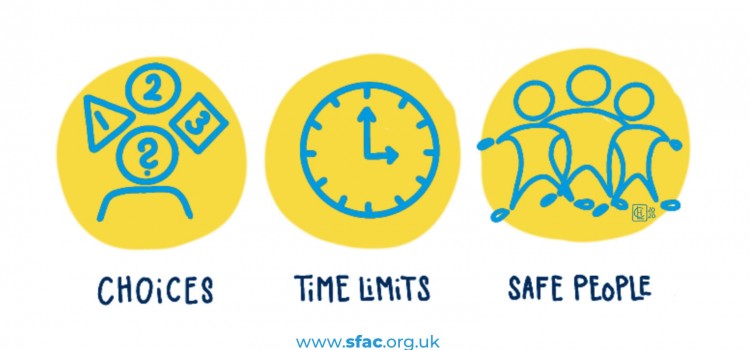
1. Choice
One way to help regain a sense of feeling safe is to look for choices. Often the opportunity to make small choices in a situation where we have little overall control can help. For example, if a child moves to a new family, the carer could ask them what meals they like to eat or let them choose their snack. It might be as simple as asking who they would like to accompany them as they leave one home and move to the next.
Small warning: Too much choice can actually increase feelings of being unsafe! Keep choices clear and within a framework of limited options. For vulnerable people, generally the fewer options the better. E.g. Instead of saying what would you like to do today, you could ask I was wondering about going to the park, visiting Grandma or curling up on the couch with some stories – what would you like?
2. Time Limits
We are all so much better at coping with stressful or difficult situations when we know when they’re going to end. If I’m going through a particularly busy period at work but I know that I have a holiday coming up or that things will calm down again soon, then that light at the end of the tunnel helps me to keep going. It increases my capacity to cope with the situation. If, however, I can’t see any change happening in either the immediate or long term future, then I’m going to start feeling pretty unsafe. My performance and my physical and mental health and probably also my relationships may be affected, too. I’ll be sharing a framework I use for working with time limits alongside some practical tips and strategies in an upcoming post.
3. Safe people
This one is key. If you or someone you know is feeling unsafe one of the easiest ways to help bring them back towards feeling safe is through connection with a safe person in their life. A fascinating research study conducted in the USA in 2006^ found women who were threatened with receiving a small electric shock showed less activation in their brains when their partner was holding their hand. Even holding the hand of a stranger reduced the activation compared with being on their own. When we’re in the presence of someone we trust we’re likely to feel safer and our brains less reactive.
What a perfect segue into our next topic – Belong!
*Reminder: this is the briefest of introductions to this topic. There is much more to be said – keep an eye out for future posts and an online course coming soon!
References & Further Reading:
If you want to know more about the brain and how it reacts under threat check out Dan Siegel’s work. His book, Whole Brain Child, written with Tina Payne Bryson, is an excellent starting place. In a childhood trauma context Bruce Perry’s work at the Child Trauma Academy is really helpful. And for using an understanding of the brain to develop resilience in the face of depression and difficult life circumstances I highly recommend The Upward Spiral by Alex Korb.
^ Coan, J.A., Schaefer, H.S. & Davidson, R.J. (2006). ‘Lending a Hand: Social Regulation of the Neural Response to Threat”, Psychological Science, 17(12), pp. 1032-1039
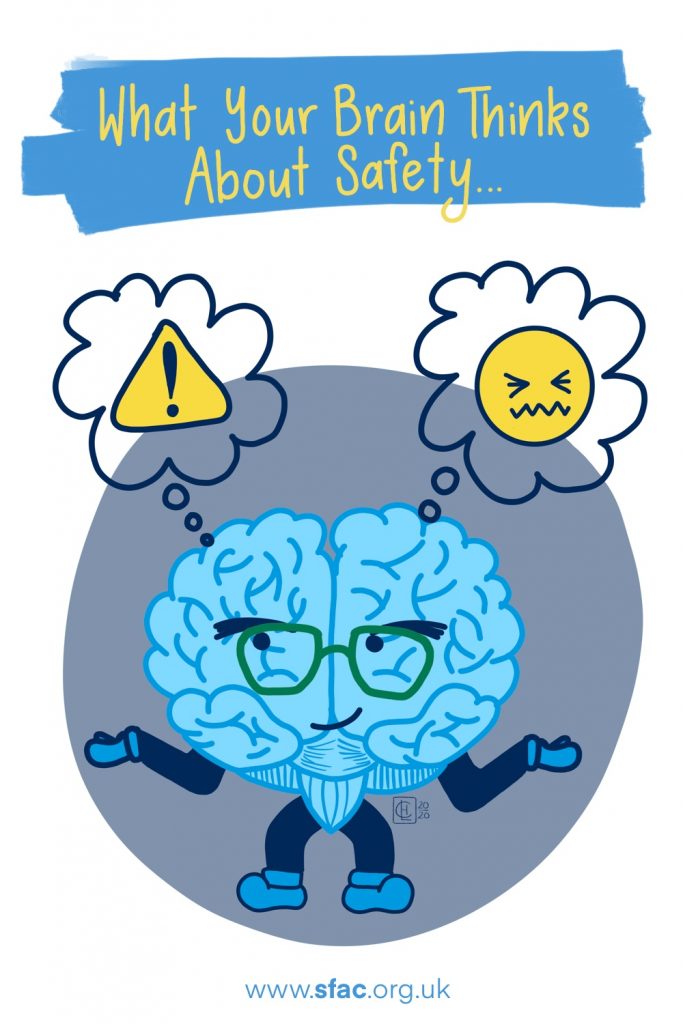

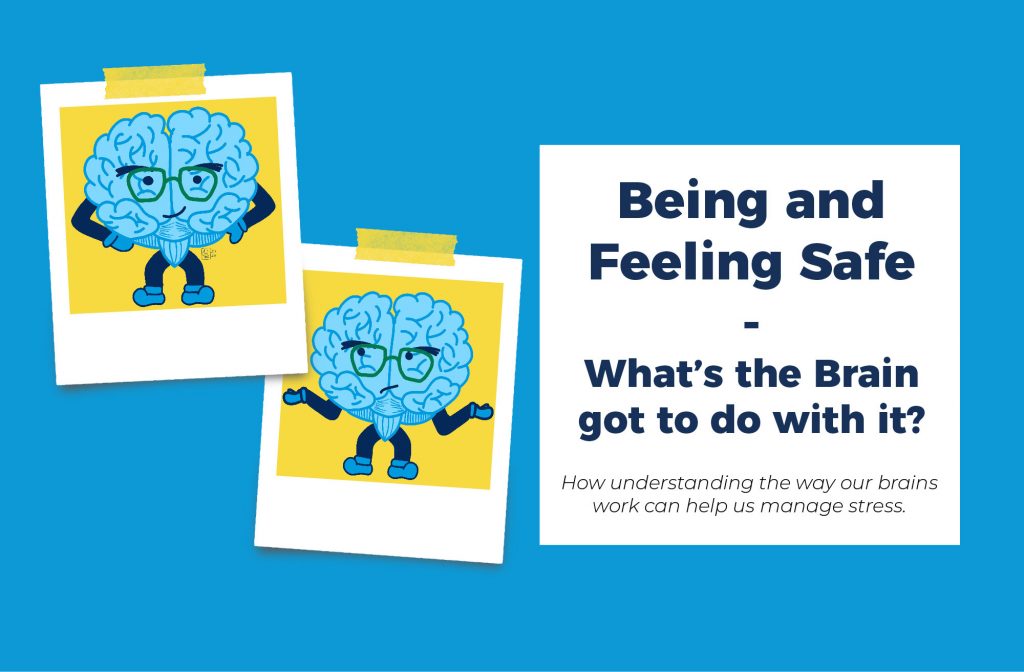
Pingback: How to connect and find your people - building a sense of belonging - SFAC
Pingback: Three practical, science-backed coping strategies for difficult times - SFAC
Pingback: Three practical, science-backed coping strategies for difficult times - SFAC
Pingback: SFAC News In Brief - Vol 1 (May 2020) - SFAC